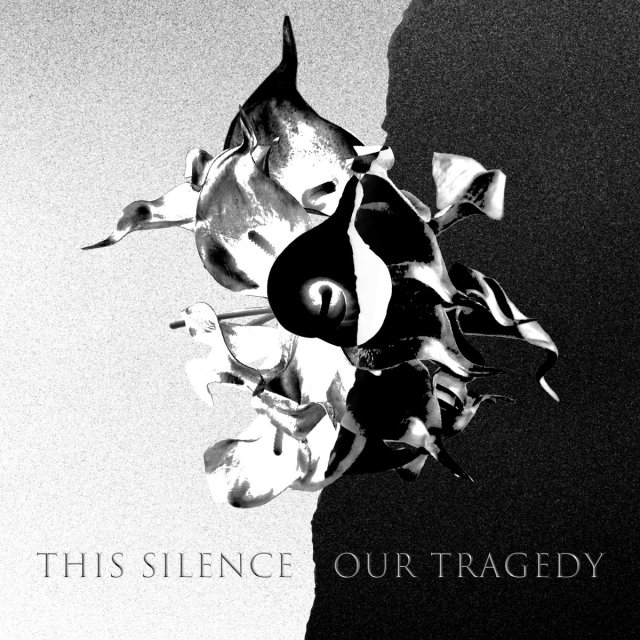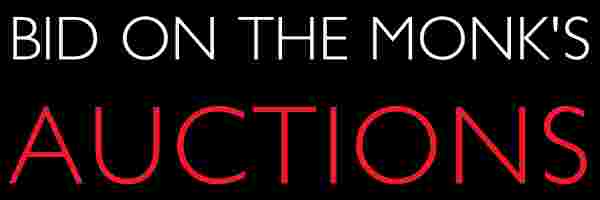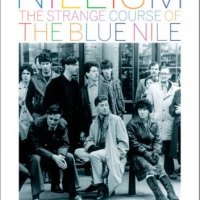1988
After the Glass Spider Tour juddered through 1987 to a miasma of mixed signals, Bowie took some time off the following year for a re-think. I had not bought any of his contemporary albums by 1988 for as long as I had been buying them previously. I wondered if he would ever return to making music I could accept. His 70s legacy stood as tall as ever but I could not help but notice that only a few years after “Let’s Dance,” all of Bowie’s [classic RCA] albums on CD were allowed to go out of print. My copy of “Fame + Fascination” would be the only David Bowie CD I would own for some time. Bowie sightings in the CD bins became hyper-rare events, sadly. That’s what I got for dawdling around, buying contemporary music with my entertainment dollar instead. Fortunately, by the next year, Bowie had chanced to meet Reeves Gabrels.
1989
What was beautiful was that Gabrels was a guitarist whose wife was doing PR for Bowie at the time of the Glass Spider tour. Gabrels was there for some of it and clicked behind the scenes with Bowie socially, who enjoyed his company and conversation. Gabrels never let on that he was a guitarist during this time. Instead they discussed what Bowie was doing and Gabrels made no bones about finding it wanting. It was up to Gabrels’ wife who later gave Bowie a tape of his playing. When Bowie was invited to play some music live in 1988 for dance troupe La La Human Steps, he called up Gabrels and they worked up a seven minute re-think of “Look Back In Anger” that gave Bowie a lightbulb experience after this.
The guy who had been haranguing him about what he was doing with his life just might be the guy to help pull him from his creative doldrums. Bowie then conceived a new band built around himself and Gabrels on guitar. Old hands the Sales brothers from Iggy’s past would be a hot rhythm section. The band coalesced quickly and by Spring of 1989, word was bubbling up that Bowie had formed a band and that it would not be Bowie + sidemen but an actual group, but what would it sound like?
I had heard the stories, but after years of lame Bowie music, I was now skittish. I would need to hear some of this stuff first, before running out and buying a copy. To this end, whoever was in charge of promo for Tin Machine wisely bypassed the traditional music video script. What they did for Tim Machine instead was exactly what I needed to see/hear at that point. A twelve minute medley was filmed instead with 6-7 tracks excerpted instead of one song. Nice. Gun-shy ex-Bowie fans needed a lot of convincing I would think, by this point in time, and this approach really put the cards on the table. I saw this on Night tracks [the TBS weekend late night MTV-like programming block] and went out immediately and bought the album. It was my favorite album of 1989; a stunning riposte to the insipid and depressing end of the 1980s as well as Bowie’s part in that disappointing decade.
First of all, this was a ROCK album. None of the digital synth chaff that filled the albums I’d sat out was in evidence. Avoiding Yamaha synths and drum machines was exhilarating for my ears to hear. These were tools that aided Bowie in straying from his path. The album was marked by a primary aggression directed against all sorts of interesting targets. I particularly enjoyed the anti-racist screed “Under The God.” They really sounded like they meant it here. There were occasional lighter moments of beauty, but for the most part, this was the toughest sounding Bowie album since “The Man Who Sold The World,” though it would still be several years until I heard that one. I bought most of the singles from this one on UK CD5 format. I was finally back in the Bowie swing of things and not a moment too soon. I had begun to grow weary of writing him off.
Next: …The Catalog returns and leaves








![Chris Cross: 1952-2024 [part 2]](https://postpunkmonk.files.wordpress.com/2024/04/ultravox-cross.jpg?w=200&h=200&crop=1)

![Forty Years Ago Today, Simple Minds Changed Everything with "New Gold Dream [81,82,83,84]"](https://postpunkmonk.files.wordpress.com/2022/09/new-gold-dream-in-spotlights.jpg?w=200&h=200&crop=1)


Completely agree here. I thought Let’s Dance was pretty good, if a bit weak. Tonight had a few decent tracks, and I thought the soundtrack songs were okay (I do kind of like “Absolute Beginners”, I’ll admit), but Never Let Me Down did exactly that. It kind of felt like he’d decided to go with the commercial flow and become the middle-aged rock musician who’d lost his bite and relevance. But OH MAN did I love Tin Machine! As soon as I heard “Under the God” I knew he’d found his groove again.
Amusingly, I realized around the same time that he and Paul McCartney had parallel careers here: both were unstoppable in the 70s, had a decent time in the early 80s, dried up in the mid-to-late 80s, and released a killer comeback in 1989. Sometimes I wonder if it wasn’t partly due to what was going on musically during 1985-1987, at least in the pop world…after all, that was the era of Stock Aitken Waterman filling the charts. ;)
LikeLike
JC – Yes, the Beast who was PWL became the tall that wagged the dog of UK pop by the period. If you weren’t a soap star with an identikit disco records, you didn’t matter. Interesting simile to Paul McCartney. I was never a fan but the team up with Elvis Costello was intriguing enough for me to buy a copy of “Flowers In The Dirt” back then… ecxept that my copy was a mispressing with a compilation of The Undertones on it instead of Macca. I took that as a sign from the lord! I later sold it to a McCartney collector [it was in the “Flowers In The Dirt” deluxe tour box version] and never looked back. I still have not heard the album!
LikeLike
I tend to remember how disappointing the 80s were for Bowie output in terms of the artistic highs of the late 70s, but as I mentioned previously, this was the “business Bowie” era following the split with DeVries where I think Bowie felt a lot of pressure to prove himself as a commercial success, so I liked the bits of that era I liked (I love “Absolute Beginners” — a very sweet love song) and hoped it was a phase, like I hoped his “retirement” after Reality was.
Oddly enough, for me the Tin Machine period was approached the same way — “oh, he wants to play just Mr. Joe Lead Singer in a ‘real group’ now” — and while the return to rock was welcome, I gave the two albums a listen and didn’t find much more there than I could pick out that I liked of the 80s albums. I did like “Under the God” and some others but never really warmed to Tin Machine, because what I really wanted was more Lodger and Scary Monsters, and I wasn’t getting that in Tin Machine.
It’s probably high time for a Tin Machine (and general 90s) re-appraisal: I haven’t listened to much of that stuff since it came out. Historically, it’s remembered as Bowie starting the long climb back to full creativity, but for me personally Bowie wasn’t back on completely solid footing until Hours in 1999 (!), which is not to say I didn’t like the preceding albums of the 90s — just that they were, for me at least, too hit-and-miss to completely embrace.
LikeLike
chasinvictoria – Yeah, I hear you on “Hours.” It’s not earth shaking but it was the point where he got off of the merry-go-round of the 90s [acid jazz/techno/industrial/drum+bass] and just wrote songs for the first time in a long while. Some very good ones for the most part, though the production lets them down somewhat.
LikeLike
All praise is due The Hours – in fact Hours, Heathen and Reality was a triumph of Bowie musical/artistic resilience. Some of his modern classics are found on these records including Everyone Says Hi and 5:15 The Angels Have Gone.
I have to admit I listened to those 90’s albums – Black Tie White Noise is probably where I hoped the hook up with Reeves Gabrels should have taken him, Outside show’s Bowie playing with his process, but Earthling was more of Bowie fitting himself in rather than redefining.
LikeLike
As usual I find your comments very accurate. While Earthling was a product of its production style, that album is RIFE with stuff Iva Davies and others could resurrect the way he did “Loving the Alien.”
LikeLike
chasinvictoria – I have a lot to say about Earthling once I get there, but remember: this is not a Rock G.P.A.!
LikeLike
This may not be a Rock G.P.A. Monk, but Bowie’s art is always going to lead to critical eyes and rankings.
LikeLike
Sorry to jump ahead but have to say I love 1. Outside, wish they’d do a deluxe reissue the way Bowie apparently wanted it.
I even have a soft spot for Bowie’s character voices between tracks….
LikeLike
I will always give Bowie credit for coming to the realization he made a wrong turn after 1983. And I thing the hook up with Reeves Gabrels promised much – just listen to the Intruders At The Palace version of Look Back In Anger and how intense it and dark it became.
But I have spent 25 years trying to like Tin Machine and I still haven’t gotten there. In fact I gave a quite a long time ago. Under The Gun is great punk/metal parody with Ziggy Era lyrics, but there was never much else there for me. Now I know Bowie/Ziggy was “lad” music back in the 70’s, but then Bowie was the Pied Piper bringing those “lads” over to his camp and carefree netherworld. With Tin Machine, I felt like Bowie was yelling “Hey, over here guys, watch this!” But maybe Bowie was just pretending to be Screaming Lord Byron again…maybe…
In the end I admit, Bowie had to do something to throw off the yoke of his 80’s decisions. Tin Machine allowed for that, but it wasn’t really where I would have wanted him to go.
LikeLike